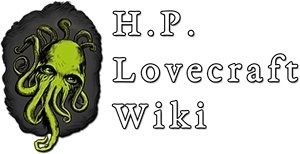Pánfilo de Zamacona y Nuñez, often referred to simply as Zamacona was a Spanish adventurer who uncovered the hidden land of K'n-yan in 1541.
Biography
Born in Luarca, Spain a quiet port on the Bay of Biscay he was a wild young man and at the age of 20 traveled to New Spain. Arriving in the Americas 1532 he found himself surrounded by tales of adventure and in 1540 he was picked to head North with Coronado's failed Expedition to Cíbola. Eventually Zamacona was one of the few selected for the last ditch attempt to discover something of worth. Though Coronado gave up at the Arkansas River in Autumn 1541 Zamacona was still optimistic enough to believe the stories of Charging Buffalo a native American who'd navigated a series of tunnels through to a vast cavern that glowed with a strange blue light.
Enticed by promises of golden cities he abandoned the camp under Charging Buffalo's guidance on 7th October 1541 and by the 13th the pair had found the tunnel's red sandstone entrance in a great ravine. Armed with a good stock of torches Zamacona continued alone, agreeing to meet his fearful companion in a months time. His progress took him past a series of carvings dedicated to Yig and Tulu though his closest frame of reference came from the walls of Mexico. After 3 days trek the tunnel opened up into the blue-lit cave described by Charging Buffalo.
Roughly following a decaying highway he stumbles upon a river with small villages dotted along its bank but also realises that he's being tracked. Reaching one of the abandoned settlements he seals himself in a gold lined temple with a dark metal statue of Tulu which seemed to attract a talisman he found in the dirt to rest. He is woken by his pursuers, a party of 20 K'n-yanians and despite his knowledge of Wichita, Aztec, Spanish, French, Latin, Greek, Galician, Portuguese and Babel peasant patois he is unable to communicate until they make psychic contact. They explain that they can't let him leave and he rides with them to Tsath on a gyaa-yothn. His guide G'll-Hthaa-Ynn uses the journey to catch Zamacona up on the history and culture of K'n-yan indicating points of interest on the way.
In return for his knowledge of the outside world he was offered an apartment in the city, unlimited access to the city's library, 10 slaves and a place in a high class affection-group. Living in the lap of luxury for four years Zamacona was able to explore the length and breadth of K’n-yan from the plains of Nith to the ruins of Yoth. However from the start the subterranean society's lack of morality offended his strict Catholic sensibilities and even in the relatively short time he was there he realised that the was becoming increasingly depraved. Having failed to convince them to release him his first escape attempt came in approximately 1543 but he was calmly turned back by waiting forces near the tunnel it was at this point that he began documenting his experiences to keep his hopes of going home alive.
He began to worry about his continued usefulness as well as developing a fascination with the mysterious N'kai. In what seemed like a stroke of luck he discovered that T'la-yub, one of the women in his affection-group, was descended from an ancient family of gate-lords and knew of an unguarded route to the surface. Gaining her trust he formed a plan to load up his gyaa-yothn with gold and head out to Mexico ,swapping out T'la-yub for a Spanish noble woman or an Indian Princess (with several Lovecraftian racial caveats). Despite making it into the tunnels one of the pack animals bolts back to the city, alerting the authorities and leading to their capture.
Put to trial in the gold/copper palace Zamacona is spared to preserve his remaining knowledge but T'la-yub is sentenced to death in the arenas before being stationed as a y'm-bhi guard. Despite knowing that his next attempt will lead to the same grisly fate he resolved to use what he'd learned about the art of dematerialisation to return to the surface. Remaining a faithful catholic to the last he prayed to the saints before making his last doomed escape attempt.
| “ | Es más tarde de lo que pensaba—tengo que marcharme/It is later than I thought; I must go. | „ | |
| ~ HPL: "The Mound", Zamacona's last recorded words |
Though his manuscript ended there his corpse was found in 1928 by an ethnologist searching the tunnels used during the T'la-yub escape. Despite lacking his head, arms and lower legs among other body parts there had still been enough to create a y'm-bhi from his remains. The K'n-yan had also enscribed a warning in broken Spanish on his chest:
| “ | Secuestrado a la voluntad de Xinaián en el cuerpo decapitado de Tlayúb/Seized by the will of K’n-yan in the headless body of T’la-yub | „ | |
| ~ HPL: "The Mound" |
